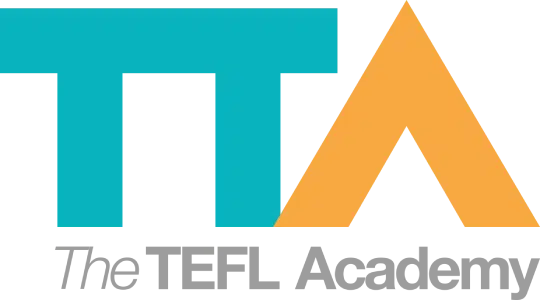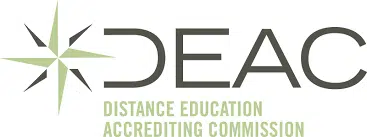What It’s Like Teaching English In South Korea Without Speaking Korean
Join a global community of over 200,000 TEFL teachers working throughout the world! Enrol me!
South Korea has been a popular TEFL destination for years and years. The surge in K-pop and K dramas has really pushed this peninsular nation into the international spotlight. As interest in South Korean culture grows, so does the number of teachers choosing to work there.
One of the first things that may nag new TEFL teachers considering a move to a non-English speaking country, especially one where English is not the second (or third) language, is how much of a hurdle the language barrier will be.
Read more: How Can I Teach English Abroad Without Speaking The Local Language?
A common question is “Do I need to speak the local language?” It’s a valid concern, but how much of a problem is that really in South Korea?
Let’s find out.
Do you need to speak Korean to teach in Korea?
Nope.
First of all, you’re there to speak English. Schools want to expose students to native English speakers’ accents and Western culture. Speaking or understanding Korean is not a requirement to teach English in South Korea.
But even a limited vocabulary is a tremendous help in navigating everyday challenges, from buying groceries to ordering food to taking a taxi. Knowing Korean will definitely make your daily life easier – but it’s not needed for the classroom.
At the same time, if you can understand basic Korean, you can manage your classes better and understand simple student requests, like when they need to use the restroom, for example. This is mostly the case when teaching Young Learners, but it can also be useful with older learners.
Read more: TEFL Myths Busted
I can speak from personal experience.
Hi, I’m Lauren. My teaching journey began at a middle school in a small town called Dongducheon, where I completed a one-year contract before moving to Seoul to work at an all-girls’ high school.
I have a Level 5 TEFL qualification from The TEFL Academy and I taught in South Korea for two years.
I arrived in Korea knowing just a few words like basic greetings, how to say “please”, “thank you”, and “you’re welcome”. Everything else I either picked up along the way or learnt through my own language-learning efforts.
Nobody expects you to know Korean.
The locals are always pleasantly surprised when you understand some Korean or when you express an interest in learning the language. And when you take a jab at using your broken Korean, it can be quite amusing.
Being constantly surrounded by a language you don’t understand can be overwhelming and tiring, but you learn to drown it out as background noise over time.
Read more: How To Deal With Culture Shock
What Korean sounds like to foreign ears
Sometimes Korean sounded like Spanish to me, which was weird. I discovered that this is down to rhythm and pronunciation.
Similar to Spanish, Korean is a syllable-timed language, meaning each syllable takes roughly the same amount of time to say. English, on the other hand, is stress-timed.
English sounds choppy to non-native speakers. In contrast, Korean has a fluent and very sing-songy sound.
As an English speaker, knowing what to expect from the sound and rhythm of the Korean language can help you adjust more quickly, even if you’re not planning to study Korean in-depth.
Read more: Language-Specific Pronunciation Problems For English Language Learners
Teaching in Korea: your co-teacher has your back
As a TEFL teacher in South Korea, you’ll teach with a co-teacher.
At school, your Korean co-teacher handles the necessary translations. They are not only there to help you at school, but also with any daily challenges you may face.
For example, one of my co-teachers wrote down my home address in Korean on a piece of paper so that I could show it to the taxi driver whenever I got a lift home, until eventually, I didn’t need that paper (which wasn’t too long into my first contract).
💡 Tip: It’s a good idea to memorise your home address, as you’ll need it for food and grocery deliveries, or for giving directions to your new Korean friends so they can visit you!
Being immersed in the language means that your ears perk up when you recognise the same words coming up. Eventually, you make associations between what you hear and the context. I learnt quite a few words this way.
Read more: Immersion Learning Explained: How To Make The Most Of The Learning And Teaching Experience
When the teacher gave the class an instruction, I would notice what the students were doing in response. From there, I would figure out the meaning.
For example, I would often hear words like anja, after which they would sit down, and sikkeureo (usually with a raised voice by a frustrated teacher), which means to be quiet.
Read more: What You Should Know About Korean Classroom Culture For Teachers
Another common phrase every expat hears (and knows) is ppalli ppalli, meaning to hurry up. It’s quite a telling phrase because it reflects the fast-paced lifestyle and awareness of time linked to efficiency.
Sometimes I would ask a teacher about a particular word I had heard earlier in the day, and I also learnt Korean this way.
Read more: 4 Ways To Work & Live In South Korea As A Foreigner
Living in Korea without speaking Korean
What helped me navigate everyday tasks — like paying bills at the ATM or getting used to the subway — was simply listening.
The ATM has a voice prompt telling you when to insert your bank card and what button to press next. I started memorising and repeating it like a script.
Same with the subway: repeating the announcements became a silly but surprisingly effective way to pick up basic vocabulary!
But learning to read Hangul, the Korean writing system, was a game-changer. I could read destination stops before they were announced, spot building names, which meant no longer needing to ask for help locating places, and order off a menu without guessing.
Not many expats bother to learn Hangul, but it’s actually not that hard, especially if you already have an affinity for languages.

Image source
What you can get away with not knowing
You don’t need conversational Korean or fluency, just a few basic phrases. So you can get away without knowing a lot!
Things that seem counterintuitive, like navigating the subway, are manageable since hard copies of colour-coded subway maps are available for easy reference.
Ordering food can be daunting but restaurant menus generally have pictures that you can point to. Translation apps are also very helpful.
Useful apps for Korean-English translation include:
- Papago (available on Naver, the Korean search engine)
- Google Translate (provides offline translation)
- DeepL Translator (good for understanding tone, intent and situations)
- Microsoft Translator (sounds more human)
I used a free translation service provided by the Korean Tourism Organisation (KTO). I saved their number in my phone and called them whenever I ran into major language barriers.
Read more: How To Get Over The Language Barrier Without Learning The Language
For example, one time I was at the bank trying to make money transfers home, and the teller didn’t understand me. I called the number, and a translator mediated while I handed my phone back and forth. It worked like a charm, and it’s free!
What you should learn to avoid frustration
Basic greetings
Familiarise yourself with Korean honorifics. There are various levels of respect, and it’s good to know when to use them.
When greeting a close friend, you would say annyeong (casual), but when greeting a co-teacher, you would say annyeonghaseyo (polite), and for the principal or anyone with senior status, stick to annyeonghasimnikka (formal). You can see the verb endings differ: these are the honorifics.
Respect is important, so knowing this will help build better relationships with your new colleagues.
Functional Korean
- Hello. = Annyeonghaseyo (안녕하세요)
- Yes. / No. = Ne. / Aniyo. (네 / 아니요)
- Thank you. = Gamsahamnida (감사합니다)
- I don’t know. / I don’t understand. = Mollayo. (몰라요)
- Over here. (good for instructing a taxi driver where to drop you off) = Yogiyo! (여기요!)
- How much does this cost? (good for shopping) = Igeo eolmayeyo? (이거 얼마예요?)
- Where is the bathroom? = Hwajangsil eodiyeyo? (화장실 어디예요?)
- Excuse me. / Sorry. = Sillyehamnida. / Mianhamnida. (실례합니다 / 미안합니다)
Numbers
Try to learn the number system. You only need the first few numbers. It helps when shopping or when ordering from a menu — and you’ll likely be eating out a lot!
Most teachers arrive in South Korea without knowing how to speak Korean and thrive, so teaching without it is totally doable.
Read more: Teach English in South Korea with EPIK – no Korean required
As I’ve said, knowing a few basics can carry you through many situations. And if all else fails, you can always rely on your body language and context to make yourself understood.
About the author

Lauren is a Web Content Writer for The TEFL Academy with a background in media, film, and education, and a passion for language and learning.
A University of Cape Town graduate, she holds a PGCE, is a licensed teacher, and is TEFL-qualified. She has taught English to learners of all ages and levels, both in South African and South Korean classrooms, as well as online.
When she’s not writing, she’s likely deep into academic readings or enjoying a well-earned gym session.
Accreditation & Quality Assurance
The TEFL Academy was the world’s first TEFL course provider to receive official recognition from government regulated awarding bodies in both the USA and UK. This means when you graduate you’ll hold a globally recognised Level 3 (120hr) Certificate or Level 5 (168hr) Diploma, meaning you can find work anywhere and apply for jobs immediately.
 United States
US
United States
US
















